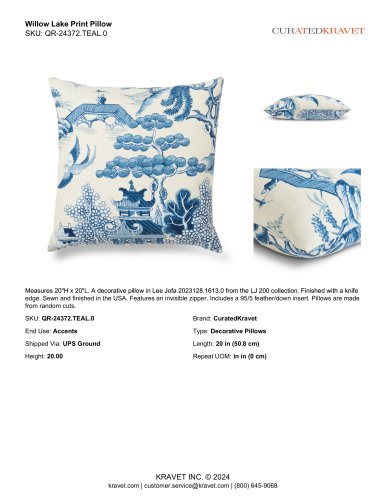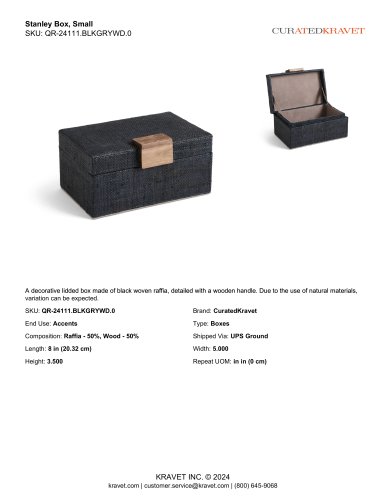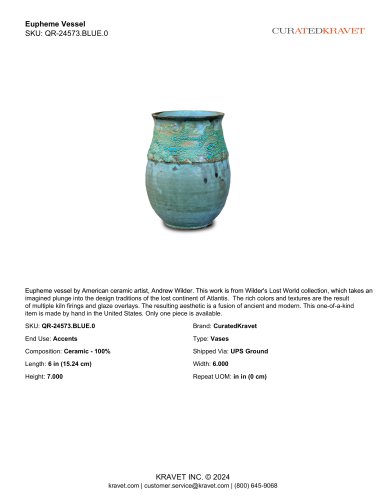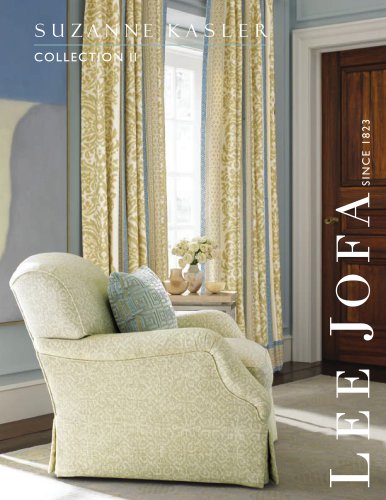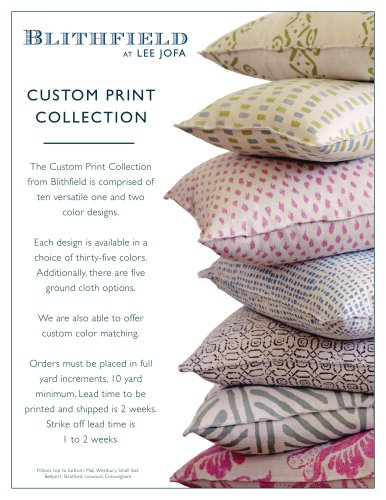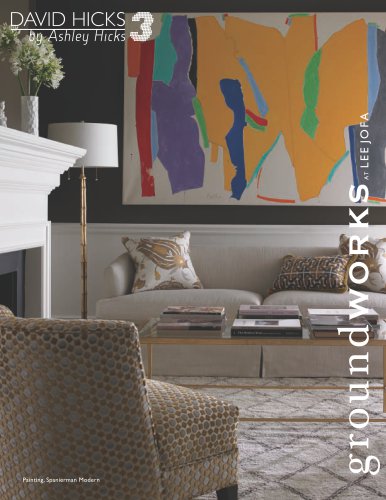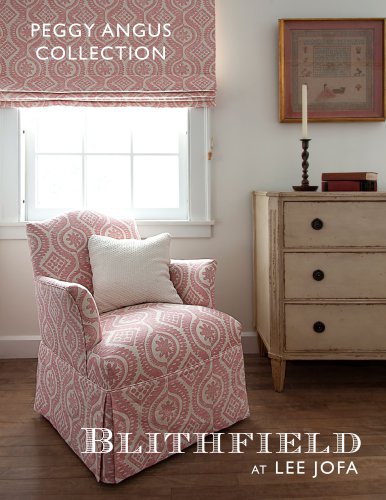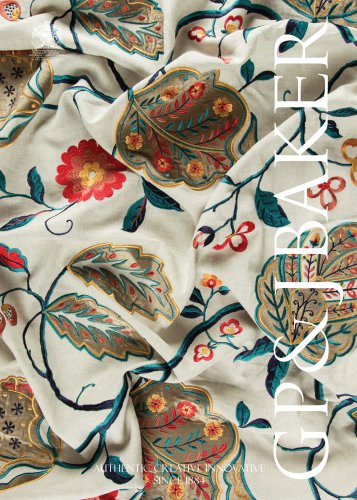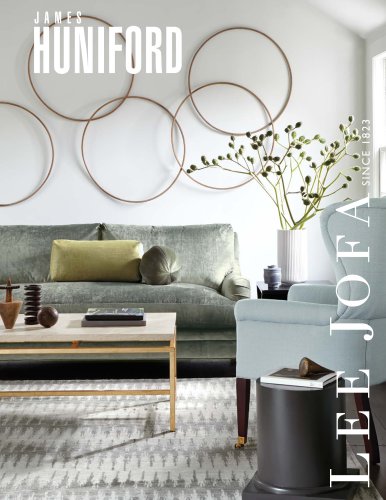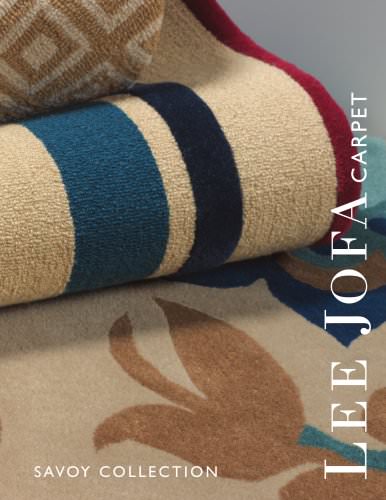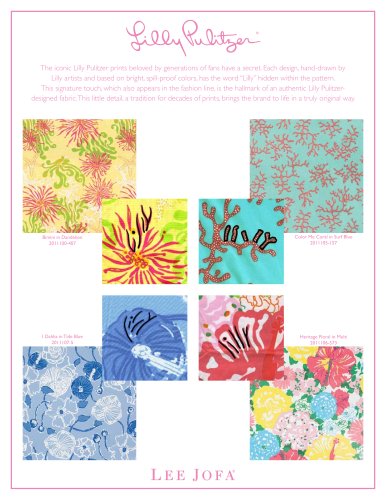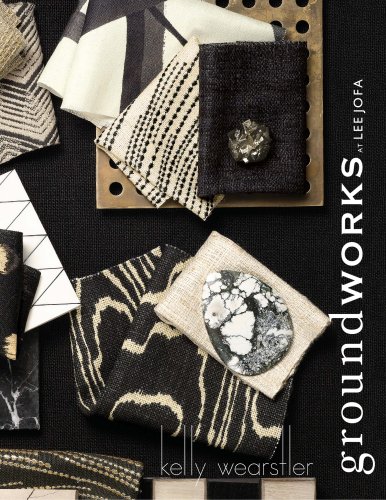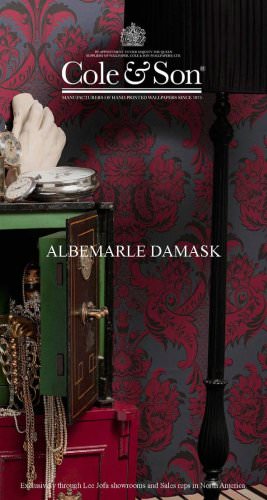 Website:
Lee Jofa
Website:
Lee Jofa
Catalog excerpts

AUTHENTIC CREATIVE INNOVATIVE SINCE 1884
Open the catalog to page 1
GP & J BAKER CRAYFORD COLLECTION Crayford, once a small market town in Kent situated amongst plentiful waterways, traces its connection with textile printing to the 1730s. The earliest print works site, developed by Charles Swaisland in the 1800s, was acquired by G P & J Baker in 1893. This allowed George Percival Baker to expand the import-export business founded in 1884, and realise his passion for printed furnishings. All G P & J Baker’s production was from the Crayford site at this time, sourcing designs from Voysey and other important Arts and Crafts designers. Initially the company...
Open the catalog to page 2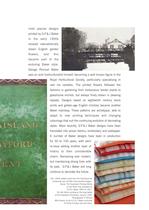
most popular designs showed naturalistically drawn English garden enduring Baker style. George Percival Baker was an avid horticulturalist himself, becoming a well known figure in the Royal Horticultural Society, particularly specialising in rare iris varieties. The printed flowers followed the fashions in gardening from herbaceous border plants to glasshouse orchids, but always finely drawn in pleasing repeats. Designs based on eighteenth century block prints and golden-age English chintzes became another Baker mainstay. These patterns are archetypal, able to adapt to new printing...
Open the catalog to page 3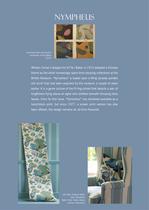
nympheus Colourings book showing four colourways of the pattern (1915) William Turner’s designs for G P & J Baker in 1915 adopted a Chinese theme as the artist increasingly spent time studying collections at the British Museum. “Nympheus” is based upon a Ming dynasty painted silk scroll that had been acquired by the museum a couple of years earlier. It is a genre picture of the Pi-ling school that depicts a pair of kingfishers flying above an egret who shelters beneath drooping lotus leaves. From its first issue, “Nympheus” has remained available as a hand-block print, but since 1977, a...
Open the catalog to page 4
Curtains: Nympheus. Sofas: Lea. Cushions: Nympheus and Lea. Trim: Beaded Braid.
Open the catalog to page 5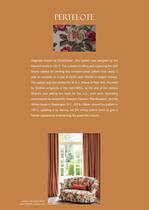
Pertelote Originally known as "Chanticleer", this pattern was designed by the Haward studio in 1917. The process of cutting and coppering the 160 blocks needed for printing this nineteen-colour pattern took nearly a year to complete at a cost of £230 (over £6000 in today's money). The pattern was first printed for W. & J. Sloane of New York. Founded by Scottish emigrants in the mid-1900s, by the end of the century Sloane's was setting the taste for the U.S., with such decorating commissions as Vanderbilt's Newport mansion "The Breakers", and the White House in Washington D.C. G P & J Baker...
Open the catalog to page 6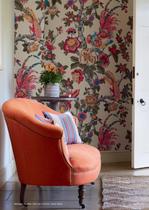
Wallpaper: Pertelote. Sofa: Lea. Cushions: Paxton Stripe.
Open the catalog to page 7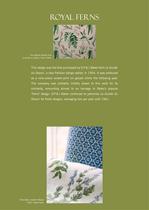
ROYAL Ferns The original artwork from La Guide du Dessin, Paris (1954) This design was the first purchased by G P & J Baker from La Guilde du Dessin, a new Parisian design atelier, in 1954. It was produced as a nine-colour screen-print on glazed chintz the following year. The company was probably initially drawn to this work for its similarity, amounting almost to an homage to Baker's popular "Ferns" design. G P & J Baker continued to patronise La Guilde du Dessin for floral designs, averaging two per year until 1961. Chair Back: Crayford Weave. Fabric: Royal Ferns.
Open the catalog to page 8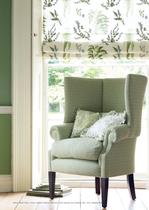
Blind: Royal Ferns. Chair: Crayford Weave. Cushions: Leaf Cascade and Shadow Fern. Trim: Beaded Braid.
Open the catalog to page 9
LEAF cascade Proof on paper from block-making records This pattern is from an original watercolour by George C. Haité, first produced by G P & J Baker as a hand-block print in 1903. Haité (1855-1924) was a leading designer of the Arts & Crafts movement, known for his accomplished use of plant studies in design, and the grace and ease with which he executed all-over patterns. "Leaf Cascade" shows Haité at the height of his powers, presenting freelybrushed clusters of willow-like foliage that pleasingly intermingle, while never losing fidelity to nature. Haité's design career began at aged...
Open the catalog to page 10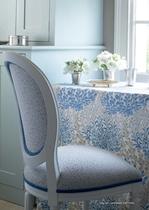
Table Cloth: Leaf Cascade. Chair: Forbes.
Open the catalog to page 11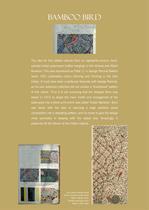
Bamboo bird The idea for this pattern derives from an eighteenth-century handpainted Indian palampore (cotton hanging) in the Victoria and Albert Museum. This was reproduced as Plate 11 in George Percival Baker's lavish 1921 publication Calico Painting and Printing in the East Indies. It must have been a particular favourite with George Percival, as his own extensive collection did not contain a "transitional" pattern of this nature. Thus it is not surprising that the designer Burn was asked in 1915 to adapt the main motifs and arrangement of the palampore into a block print which was...
Open the catalog to page 12
Curtains: Bamboo Bird. Trim: Corded Braid. Chair: Wimborne Stripe. Cushion: Lea.
Open the catalog to page 13
PERSIAN POMEGRANATE Sample on linen from the 1930s surface roller book This pattern is taken from a design by the Haward Studio purchased for 24 guineas in March 1931. Sidney Haward trained at the Silver Studio and later set up on his own in Kensington, becoming one of the leading London design studios serving clients such as Liberty, Story's, Hamptons and other top furnishing emporiums. Taking as its principal theme the flowering branch and butterfly of Chinese hand-painted wallpaper, Persian elements have been added such as the erstwhile nightingale, pomegranate, and banded stems....
Open the catalog to page 14
Chair: Persian Pomegranate. Wallpaper: Burnish. Curtain:Layton Velvet. Cushion: Lea.
Open the catalog to page 15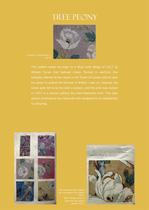
tree peony A portion of Colouring No. 1 (1917) This pattern traces its origin to a block print design of 1917 by William Turner that featured crows. Painted in wartime, this probably referred to the ravens in the Tower of London said to have the power to protect the fortunes of Britain. Later on, however, the crows were felt to be too dark a subject, and the print was revived in 1957 in a version without the black-feathered birds. This later version continues to be a favourite with designers for its adaptability to colouring. Left: Colourings book showing four colourways of the pattern...
Open the catalog to page 16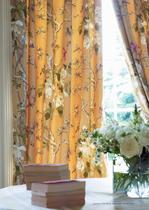
Curtains: Tree Peony. Table Cloth: Melora Stripe.
Open the catalog to page 17All Lee Jofa catalogs and technical brochures
-
Amdune - Seaside
1 Pages
-
Great Reef Wp - Surf
1 Pages
-
Willow Lake Print Pillow
1 Pages
-
Stanley Box, Small
1 Pages
-
Clyde Sculptural Wall Art
1 Pages
-
Eupheme Vessel
1 Pages
-
Morro Drinks Table
1 Pages
-
Porter Sectional
5 Pages
-
Roulade Print - Navy/Teal
1 Pages
-
Suzanne Kasler collection II
4 Pages
-
WORKROOM 2015-2016
48 Pages
-
Lee_Jofa_Blithfield_Langham
4 Pages
-
Threads-Variation
16 Pages
-
Larkhill-Collection
16 Pages
-
Groundworks-David-Hicks3
8 Pages
-
Solarium
6 Pages
-
Blithfield_Peggy_Angus
4 Pages
-
Groundworks-Hunt-Slonem
16 Pages
-
Langdale-Collection
5 Pages
-
Bohemian-Romance-Collection
16 Pages
-
kelly wearstler
6 Pages
-
Oscar De La Renta
6 Pages
-
Ithaka
4 Pages
-
James Huniford
4 Pages
-
SuzanneKasler CollectionII
4 Pages
-
Groundworks Wall trim
6 Pages
-
AERIN
20 Pages
-
SAVOY COLLECTION
4 Pages
-
Workroom
28 Pages
-
Cole &Son: Festival Stripes
8 Pages
-
Lilly Pulitzer:Trimmings Catalog
16 Pages
-
Lee Jofa - Lilly Pulitzer
8 Pages
-
Mulberry country weekend
16 Pages
-
KARENZA COLLECTION
8 Pages
-
Lee Jofa-furniture 2011
28 Pages
-
Lee Jofa-Furniture CATALOG 2013
82 Pages
-
Robert Brown for MacRae
12 Pages
-
LJ Kelly Wearstler
6 Pages
-
Heritage collection
10 Pages
-
SUZANNE KASLER
6 Pages
-
marwood COLLECTIONS
12 Pages
-
cole & son
7 Pages




